Whether we're talking about timber construction - solid timber, timberframe or prefabricated panel houses - or buildings such as sports arenas, water parks or community buildings, they are all chosen for their myriad advantages. Among the most important are reduced construction time compared to traditional houses, high energy efficiency, clean building sites and lower construction costs. In addition to the timber frame, the skeleton of the house, a number of other materials are used to ensure good thermal and sound insulation (such as ISOVER mineral wool or ISOVER VARIO® system, which we have talked about in previous articles), for stiffening walls, interior partitioning or ceiling cladding. What kind of tiles are used? Here are some of them:
- OSB
- Gips-carton
- Fiber plaster tiles
- Cement tiles
Manufacturers are continually trying to find the best solutions for the strongest and most durable constructions. For compartmentalization in timber-framed houses, Saint-Gobain Rigips Recommend RigiStabil.
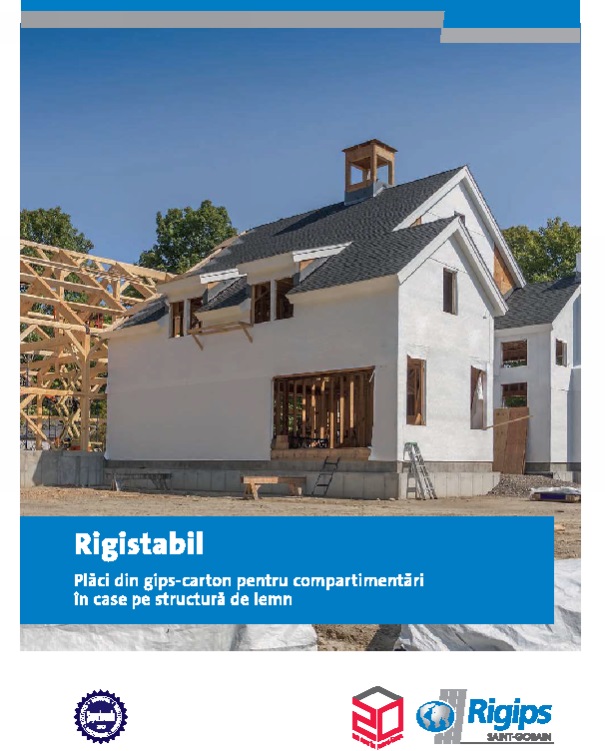
What is RigiStabil
RigiStabil is a gypsum plasterboard specially designed to meet special strength requirements in drywall and plaster construction (cladding). Designed to be fixed to wooden or metal structures, RigiStabil can also be used for the manufacture of partitions on production lines due to its special characteristics. RigiStabil can successfully replace traditional materials such as plywood, OSB or fiber-reinforced gypsum boards, with the resulting structure having at least as good mechanical strength. In addition, it offers high flexural strength, with a high degree of resistance to mechanical loads.
The board can be used in partitions and ceiling systems to increase their rigidity and durability, while increasing fire and moisture resistance, all combined with improved acoustic performance. RigiStabil complies with the requirements of SR EN 520+a1:2010, falling under type DFRiEH2, i.e.:
- D: density controlled;
- F: with improved core adhesion at high temperatures;
- A: with high resistance;
- i: with increased surface hardness;
- E: with increased resistance to water vapor diffusion;
- H2: low water absorption.
RigiStabil does not contain harmful substances and remains inert, with no harmful emissions, throughout the lifetime of the building. The manufacturing process protects the environment as the plaster is a material that can be recovered and recycled, so it can be used in several manufacturing-use cycles. The board has a long lifespan, in line with future requirements in terms of sustainable living, raw material consumption, climate, sustainability and above all environmental protection.
Use of RigiStabil boards in the construction of timber frame walls
RigiStabil is a plasterboard with a structural role and versatile use. It is ideal as a construction board for new buildings, but also for the reconstruction of walls and ceilings in the re-compartmentalization or remodeling of old buildings. It is suitable for areas with high humidity (bathrooms, kitchens) and solves special requirements related to the mechanical and fire resistance of structures. In spite of its lower weight, appreciated for its impact on the total weight of the construction and thus on the seismic resistance, the slab has high bearing capacity. The bending resistance is also high, the RigiStabil plate can be used where high mechanical stress conditions exist.
Thanks to these characteristics, RigiStabil can be used for both interior and exterior wall construction. RigiStabil interior partition walls on wooden structure take over the superior mechanical characteristics of the boards, resisting high impact or perforation stresses and providing fire protection. Below you can see a diagram of such an interior wall in which RigiStabil boards have been used.

For exterior closures, hybrid walls are recommended, which consist of RigiStabil sheets for the inner face of the wall and fiber-reinforced gypsum boards (e.g. Rigidur®) for the outer face, as shown in the picture below.
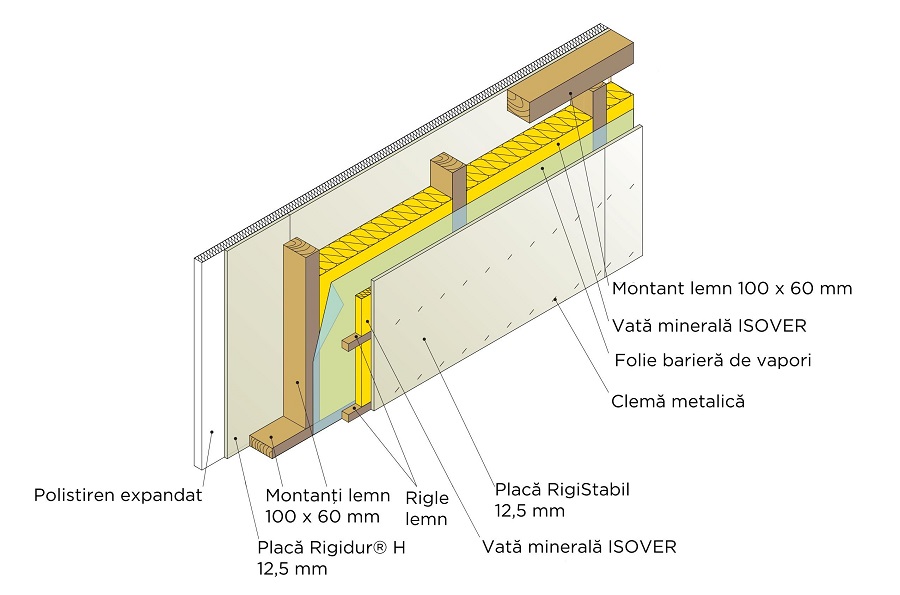
In the case of false ceilings or wall cladding, RigiStabil is installed in the same way as any other plasterboard. Fixing the boards to the wooden structure can be done with wood screws or metal clamps. A bead of Rigidur® Nature Line adhesive is applied to the joint area of adjacent boards and excess material is removed after drying.
RigiStabil sheets have been used for a long time in construction in Europe. In Romania, after a timid start, the outstanding qualities of the sheet have begun to convince more and more builders. Those interested in further information about the characteristics of the plate and how to use it, can contact Saint-Gobain Rigips, either by email at office.rigips@saint-gobain.comor by phone on +40 21 207 57 50 or +40 21 207 57 51.
Photo credit: Saint Gobain Media Library



























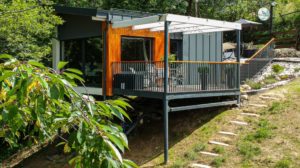


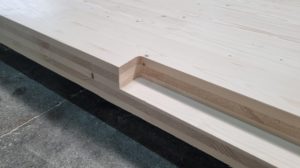
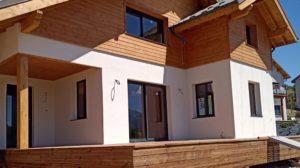




Hello,
can these Rigistabil boards be mounted directly on the wooden structure?
I have an attic on timberframe and am right on the money for interior cladding.
I was thinking that I should also put metal structure because wood and plasterboard work differently at temperature and humidity.
Thank you